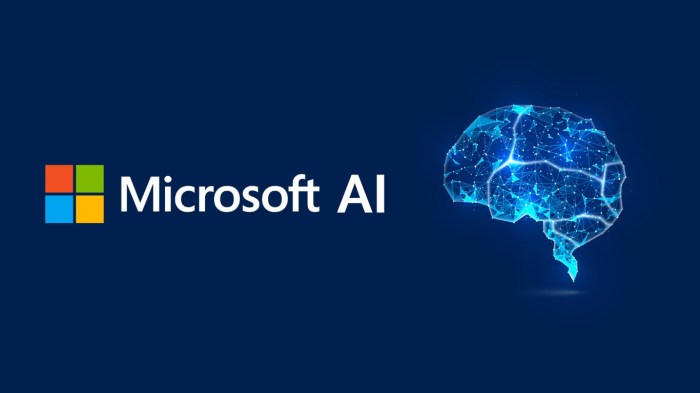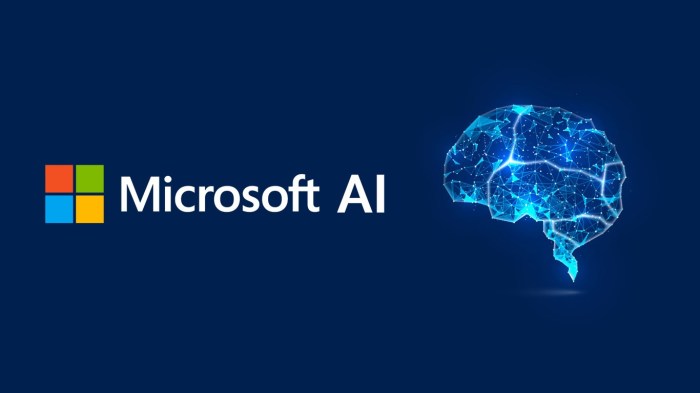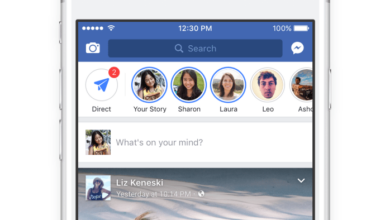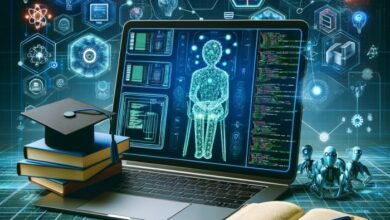
Microsoft AI visual storytelling is revolutionizing how we create and experience narratives. By harnessing the power of artificial intelligence, we’re entering a new era where technology empowers us to tell stories in ways never before imagined. Imagine a world where data transforms into captivating visuals, where insights are woven into compelling narratives, and where the lines between reality and imagination blur.
This technology is not just about creating beautiful images; it’s about understanding the nuances of human emotion and translating them into visual language. Whether it’s using computer vision to analyze images and extract meaning or leveraging natural language processing to generate captions that resonate with audiences, Microsoft AI is changing the game for storytellers across industries.
Microsoft AI in Visual Storytelling

Visual storytelling, the art of using images and videos to convey narratives, has been revolutionized by the advent of Microsoft AI. This powerful technology is transforming the way we create, understand, and experience visual content, making it more engaging, accessible, and impactful.
Evolution of Microsoft AI in Visual Storytelling
Microsoft AI has been instrumental in shaping the evolution of visual storytelling. From early image recognition and analysis capabilities to sophisticated AI-powered tools like Azure Cognitive Services, Microsoft has consistently pushed the boundaries of what’s possible in this domain. Initially, the focus was on automating tasks like image tagging and categorization, but today, AI is driving innovation in areas like content generation, personalization, and accessibility.
Transforming the Visual Storytelling Landscape with Azure Cognitive Services
Azure Cognitive Services, a suite of AI tools offered by Microsoft, is playing a pivotal role in transforming the visual storytelling landscape. These services empower developers and content creators to infuse their work with AI capabilities, enabling them to create richer, more immersive experiences.
- Computer Vision:This service enables image and video analysis, enabling automated tasks like object detection, facial recognition, and optical character recognition. It can be used to automatically tag images, extract text from videos, and even create captions for visually impaired users.
- Content Moderator:This service helps content creators identify and flag potentially offensive or inappropriate content, ensuring that visual stories are safe and suitable for all audiences. It uses AI to detect harmful content, including hate speech, violence, and nudity, allowing creators to moderate their content effectively.
Microsoft AI visual storytelling is revolutionizing how we experience narratives. Imagine a world where data comes alive, weaving tales that resonate with every viewer. It’s like a pair of Jimmy Choo’s signature ballet pumps made in Italy , elegant and meticulously crafted, but instead of fashion, we’re crafting immersive experiences.
This technology is poised to transform how we communicate, learn, and connect with the world around us.
- Custom Vision:This service enables users to build custom image recognition models tailored to their specific needs. This is particularly valuable for industries with specialized imagery, such as healthcare, where AI can be used to analyze medical images, assist in diagnosis, and even predict potential health risks.
Applications of Microsoft AI in Visual Storytelling
Microsoft AI is being used to enhance visual storytelling across a wide range of industries. Here are some prominent examples:
Marketing
Microsoft AI is revolutionizing marketing by enabling marketers to create personalized and engaging visual content. AI-powered tools can analyze customer data to understand preferences and tailor content accordingly. For example, a clothing retailer could use AI to create personalized product recommendations based on a customer’s browsing history and past purchases.
Education
In education, Microsoft AI is transforming the learning experience by making educational content more accessible and engaging. AI-powered tools can be used to generate interactive visualizations, translate content into multiple languages, and even provide personalized learning recommendations. For instance, a history textbook could incorporate AI-generated interactive maps and timelines, making the learning process more immersive and engaging for students.
Healthcare
Microsoft AI is playing a crucial role in healthcare, where visual storytelling is vital for diagnosis, treatment, and patient education. AI-powered tools can analyze medical images, identify patterns, and assist in diagnosis. For example, AI can help radiologists detect tumors in X-ray images or assist pathologists in identifying cancerous cells in tissue samples.
Key Concepts and Technologies
Microsoft AI is revolutionizing visual storytelling, empowering creators to tell compelling narratives using cutting-edge technologies. At the heart of this revolution lie key concepts and technologies that work in tandem to bring stories to life.
Computer Vision
Computer vision is a field of artificial intelligence (AI) that enables computers to “see” and interpret images and videos like humans do. It involves training algorithms to understand the content of visual data, including objects, scenes, and faces.
- Object Detection:This technology identifies and locates specific objects within an image or video. For instance, it can recognize a car, a person, or a building.
- Image Classification:This technology categorizes images based on their content, assigning labels such as “landscape,” “portrait,” or “animal.”
- Optical Character Recognition (OCR):OCR converts text in images into machine-readable text, enabling the extraction of information from visual sources.
Microsoft’s AI visual storytelling tools are amazing for creating engaging content, but sometimes you need a little extra inspiration. That’s where Thomas Sabo’s “Experience Magic Week” comes in! It’s a fantastic opportunity to find the perfect Christmas gift for your loved ones, and maybe even spark some new ideas for your next visual storytelling project.
Whether it’s a sparkling charm bracelet or a bold statement ring, these pieces are sure to add a touch of magic to your life and your storytelling.
Natural Language Processing (NLP)
NLP focuses on enabling computers to understand, interpret, and generate human language. In visual storytelling, NLP plays a crucial role in understanding the context and meaning behind images and videos.
- Text Summarization:This technology condenses large amounts of text into concise summaries, making it easier to understand the key points of a story.
- Sentiment Analysis:Sentiment analysis helps determine the emotional tone of text, whether it’s positive, negative, or neutral. This is valuable for understanding the audience’s reaction to visual content.
- Language Translation:NLP enables the translation of text from one language to another, making visual stories accessible to a global audience.
Machine Learning (ML)
Machine learning is a subset of AI that allows computers to learn from data without explicit programming. In visual storytelling, ML is used to train models that can predict and generate creative elements.
- Image Generation:ML models can generate new images based on input data, such as text descriptions or existing images. This opens up new possibilities for creating unique visuals.
- Video Editing:ML algorithms can automate tasks like video editing, including scene selection, transitions, and music synchronization.
- Storytelling Structure:ML can analyze existing stories and identify patterns that contribute to effective storytelling, helping creators to structure their narratives.
Microsoft AI Technologies for Visual Storytelling
Microsoft offers a suite of AI technologies specifically designed to empower visual storytelling.
- Azure Computer Vision:This cloud-based service provides a comprehensive set of computer vision APIs for analyzing images and videos. It can perform tasks like object detection, image classification, and optical character recognition.
- Azure Face API:This API focuses on facial recognition and analysis, allowing developers to identify faces, extract facial attributes, and analyze emotions.
Microsoft’s AI visual storytelling tools are incredible for bringing narratives to life, but sometimes the best stories are the ones that start with a simple, delicious inspiration. Imagine creating a visual story around the tantalizing aroma of freshly baked orange dark chocolate popovers , their golden crusts glistening under the warm kitchen light.
This simple scene could be the perfect starting point for a story about family, tradition, or even just the joy of a perfectly crafted treat. With Microsoft AI, we can take that image and build an entire world around it, making the ordinary extraordinary.
- Azure Text Analytics:This service offers NLP capabilities for analyzing text, including sentiment analysis, key phrase extraction, and language detection.
How These Technologies Work Together, Microsoft ai visual storytelling
These Microsoft AI technologies work together to create compelling visual narratives.
- Azure Computer Visioncan analyze images and videos to extract information about objects, scenes, and faces.
- Azure Face APIcan be used to identify and analyze emotions in faces, adding a layer of emotional depth to the story.
- Azure Text Analyticscan be used to analyze captions and descriptions, ensuring they align with the visual content and convey the desired message.
- Machine learningcan be used to generate new images and videos, enhance existing content, and optimize the storytelling structure.
Applications and Use Cases: Microsoft Ai Visual Storytelling
Microsoft AI in visual storytelling is not just a technological advancement; it’s a revolution in how we create, consume, and understand visual narratives. By integrating AI into the creative process, we unlock a world of possibilities, enabling the generation of engaging, informative, and emotionally resonant visual stories across diverse industries.
Applications Across Industries
The applications of Microsoft AI in visual storytelling extend far beyond the realm of traditional filmmaking and photography. It empowers various industries to leverage the power of visual narratives to enhance communication, engagement, and understanding.
| Industry | Applications |
|---|---|
| Marketing & Advertising | – Personalized visual content generation based on target audience demographics and preferences
|
| Education | – Interactive learning experiences through immersive 3D models and simulations
|
| Healthcare | – Medical imaging analysis and visualization for diagnosis and treatment planning
|
| News & Media | – Automated content generation for news articles and social media updates
|
| Entertainment | – AI-generated visual effects and animation for film and television
|
Use Cases
Here are specific examples of how Microsoft AI tools are being used to enhance visual storytelling in various industries:
- Marketing & Advertising:A major clothing brand uses Microsoft AI to generate personalized product recommendations and visual content based on customer browsing history and preferences. This allows for targeted marketing campaigns that resonate with individual consumers.
- Education:A university utilizes Microsoft AI to create interactive 3D models of historical sites, allowing students to virtually explore ancient ruins and gain a deeper understanding of historical events. This immersive learning experience enhances engagement and knowledge retention.
- Healthcare:A medical research institute uses Microsoft AI to analyze medical images and identify potential anomalies, aiding in early diagnosis and treatment planning. This technology enables faster and more accurate diagnoses, leading to improved patient outcomes.
- News & Media:A news organization leverages Microsoft AI to generate automated news reports based on real-time data, providing timely and accurate information to readers. This technology allows for faster news delivery and broader coverage of events.
- Entertainment:A video game developer uses Microsoft AI to create realistic character animations and dynamic environments, enhancing the immersion and engagement of players. This technology pushes the boundaries of interactive storytelling in gaming.
Impact on the Creative Process
Microsoft AI is transforming the creative process by:
Augmenting Human Creativity
AI tools act as collaborators, providing creative suggestions and automating tedious tasks, freeing up human creators to focus on higher-level concepts and artistic expression.
Democratizing Storytelling
AI tools make visual storytelling accessible to a wider audience, enabling individuals without specialized skills to create compelling visual narratives.
Enhancing Efficiency and Productivity
AI tools streamline the creative process, automating tasks like video editing, image generation, and content optimization, leading to faster turnaround times and increased productivity.
Enabling Personalized Experiences
AI tools allow for the creation of customized visual stories tailored to individual preferences and needs, enhancing engagement and relevance.
Expanding the Boundaries of Visual Storytelling
AI tools are pushing the boundaries of what’s possible in visual storytelling, enabling new forms of interactive and immersive experiences.
The Future of Visual Storytelling
The future of visual storytelling with Microsoft AI is bright, with exciting possibilities on the horizon:
Immersive and Interactive Experiences
Expect to see more immersive and interactive visual stories that blend virtual and augmented reality, allowing viewers to actively participate in the narrative.
AI-Driven Personalization
AI will play a crucial role in tailoring visual stories to individual preferences, creating personalized experiences that resonate deeply with viewers.
Data-Driven Storytelling
AI will leverage data analytics to understand audience engagement and optimize visual stories for maximum impact, creating more effective and engaging narratives.
New Forms of Visual Storytelling
AI will enable the creation of entirely new forms of visual storytelling, blurring the lines between traditional media and interactive experiences.The integration of Microsoft AI into visual storytelling is poised to transform how we create, consume, and understand visual narratives, leading to a future filled with engaging, immersive, and personalized experiences.
Ethical Considerations

The power of Microsoft AI in visual storytelling comes with a responsibility to use it ethically. As AI technology advances, it’s crucial to consider the potential implications and ensure that its application aligns with ethical principles.
Potential Biases and Fairness Issues
AI algorithms are trained on massive datasets, and these datasets can reflect existing societal biases. This can lead to AI-powered visual storytelling that perpetuates or amplifies these biases, potentially resulting in unfair or discriminatory outcomes. For example, an AI system trained on a dataset that predominantly features images of white people may produce visual narratives that underrepresent or misrepresent people of color.
Best Practices and Guidelines
To mitigate potential biases and ensure responsible use of Microsoft AI in visual storytelling, it’s essential to follow these best practices and guidelines:
- Use Diverse and Representative Datasets:Training AI models on diverse datasets that accurately reflect the real world is crucial. This helps to reduce bias and ensure that the AI-generated visual narratives are inclusive and representative of different groups.
- Regularly Audit and Monitor for Bias:It’s important to regularly audit and monitor AI systems for potential biases. This can involve evaluating the output of the AI system, comparing it to real-world data, and identifying any disparities or biases that may exist.
- Transparency and Explainability:Transparency is essential. Users should be aware of how AI is being used to generate visual narratives. Explainability allows users to understand the reasoning behind the AI’s decisions and identify potential biases.
- Human Oversight and Intervention:While AI can be a powerful tool, it’s important to have human oversight and intervention. This ensures that AI-generated visual narratives are accurate, ethical, and responsible.






